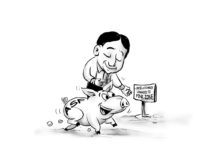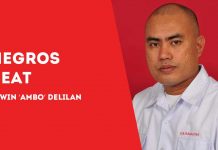[av_one_full first min_height=” vertical_alignment=” space=” custom_margin=” margin=’0px’ padding=’0px’ border=” border_color=” radius=’0px’ background_color=” src=” background_position=’top left’ background_repeat=’no-repeat’ animation=”]
[av_heading heading=’JUST ANOTHER DAY | Freedom ‘ tag=’h3′ style=’blockquote modern-quote’ size=” subheading_active=’subheading_below’ subheading_size=’15’ padding=’10’ color=” custom_font=”]
BY LUIS BUENAFLOR JR.
[/av_heading]
[av_textblock size=” font_color=” color=”]
Monday, June 12, 2017
[/av_textblock]
[av_textblock size=” font_color=” color=”]
<
p class=”NewStyle15″>“Freedom
Freedom
<
p class=”p” style=”margin-top: 0.0000pt; margin-bottom: 0.0000pt;”>Freedom
Freedom
<
p class=”p” style=”margin-top: 0.0000pt; margin-bottom: 0.0000pt;”>Sometimes I feel like a motherless child
Sometimes I feel like a motherless child
Sometimes I feel like a motherless child
A long way from my home
<
p class=”MsoNormal”>Freedom
Freedom
Freedom
Freedom
<
p class=”MsoNormal”>Sometimes I feel like I’m almost gone
Sometimes I feel like I’m almost gone
Sometimes I feel like I’m almost gone
A long, long, long, way, way from my home…
— “Freedom” (Words by Richie Havens)
TODAY is our Independence Day. The Philippine Declaration of Independence was proclaimed on June 12, 1898 in Cavite II el Viejo (present-day Kawit, Cavite), Philippines.
With the public reading of the Act of the Declaration of independence, Filipino revolutionary forces under General Emilio Aguinaldo proclaimed the sovereignty and independence of the Philippine Islands from the colonial rule of Spain.
In layman’s terms it means that this group of islands or archipelago called the Republic of the Philippines is a free and sovereign nation.
But that was not the case before as Independence Day in the Philippines was celebrated on a different date.
“Following the end of World War II, the United States granted independence to the Philippines on July 4, 1946 via the Treaty of Manila. July 4 was observed in the Philippines as Independence Day until Aug. 4, 1964 when, upon the advice of historians and the urging of nationalists, President Diosdado Macapagal signed into law Republic Act No. 4166 designating June 12 as the country’s Independence Day.”
It was a good thing that the date was changed to the actual day when Filipinos first proclaimed independence as it is pathetic that we also celebrate our Independence Day on the same date that our former colonizers, the Americans, also celebrate theirs.
Lest you forget, we are not “little brown Americans” but a free and independent sovereign nation although for most people here, their lifelong ambition is to be a citizen of another country, and owning a “green card” or a multiple entry visa to the United States of America is the answer to all those novenas and joining the procession in Quiapo Church.
So much for that, let’s talk about other things “Freedom”, the title of this column, and also of probably the most iconic of all of musician Richie Havens’ songs.
And you might be wondering who Richie Havens is, and according to that online encyclopedia:
Richard Pierce “Richie” Havens (Jan. 21, 1941 – April 22, 2013) was an American singer-songwriter and guitarist. His music encompassed elements of folk, soul, and rhythm and blues. He is best known for his intense and rhythmic guitar style (often in open tunings), soulful covers of pop and folk songs, and his opening performance at the 1969 Woodstock Festival.
The song “Freedom” introduced him to the emerging counterculture that eventually spread and changed and shattered archaic values and notions.
From Rolling Stone magazine:
“As the opening act at Woodstock, Richie Havens was supposed to perform for only 40 minutes. But when an unexpected traffic jam delayed the other performers, organizers asked him to keep playing. Three hours into it, Havens had run out of songs, so he started to make one up to the melody of “Motherless Child,” a spiritual he’d sung as a kid. “I think the word ‘freedom’ came out of my mouth because I saw it in front of me,” he said. “I saw the freedom that we were looking for. And every person was sharing it, and so that word came out.”
For the uninitiated: “In August 1969, the Woodstock Music & Art Fair took place on a dairy farm in Bethel, NY. Over half a million people came to a 600-acre farm to hear 32 acts (leading and emerging performers of the time) play over the course of four days (Aug. 15 to 18). Richie Havens, Jefferson Airplane, Jimi Hendrix, the Grateful Dead, the Who, Janis Joplin and Crosby, Stills, Nash & Young were among the line-up. Woodstock is known as one of the greatest happenings of all time and – perhaps the most pivotal moment in music history.”
So what, you may ask, is the parallel between the song “Freedom”, Woodstock and the Independence Day of the Republic of the Philippines?
Quite obvious, I should say. Woodstock is one of the biggest rock festivals of all time and a cultural touchstone for the late ‘60s. Woodstock has been referenced in many different ways in popular culture. The phrase “the Woodstock generation” became part of the common lexicon. It symbolizes breaking free from archaic values and social mores.
June 12, on the other hand, is the day when a ragtag bunch of Filipino revolutionaries decided to break the yoke of colonial rule from Spain and proclaim to the world that we are a free nation.
And the common thread between Woodstock and June 12 is “Freedom”, baby. (brotherlouie16@gmail.com/PN)
[/av_textblock]
[/av_one_full]



